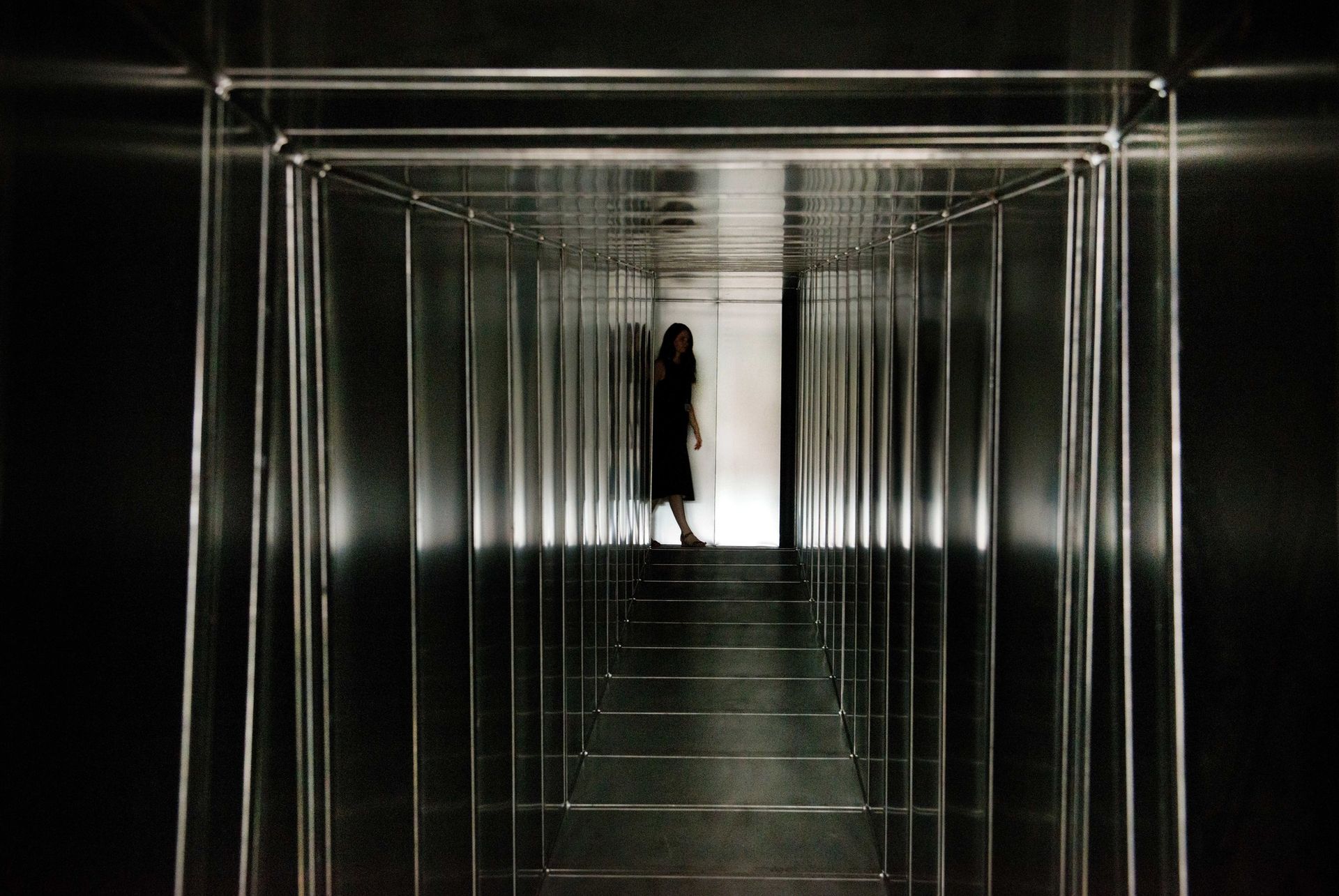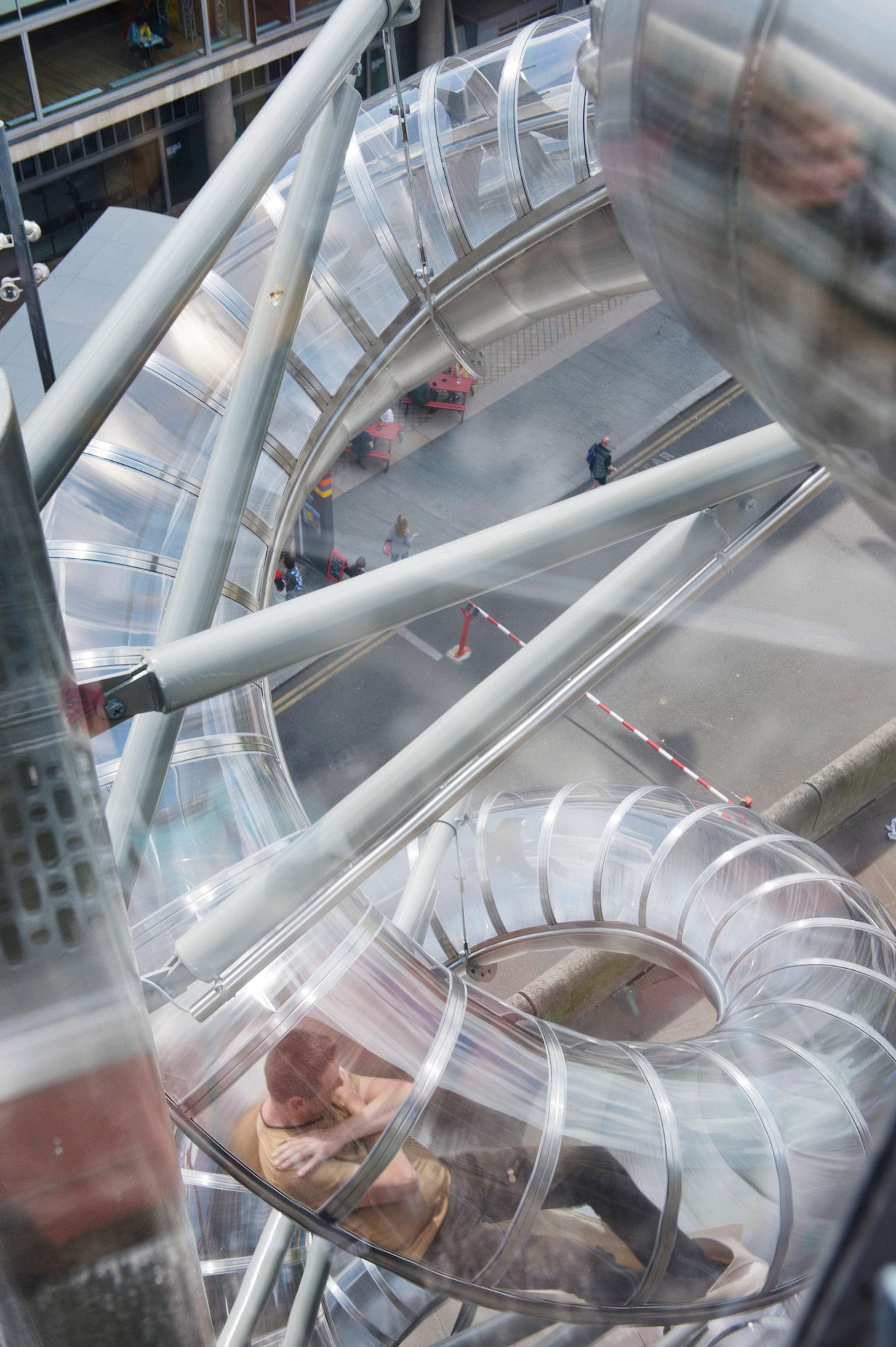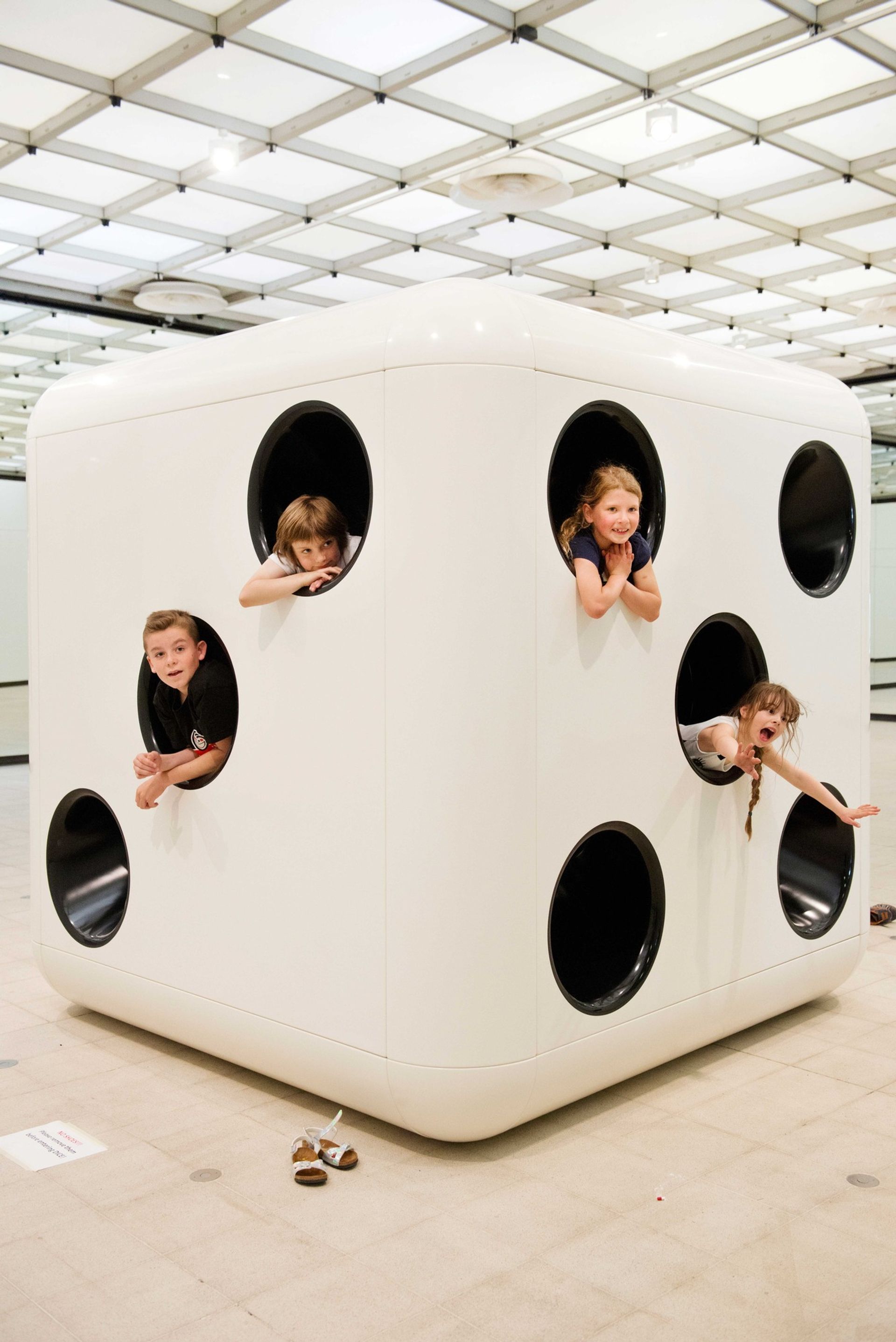I once solved a New York Times crossword puzzle where one of the clues was: “but is it___?” (horizontal, three letters). Not a hard guess: art (must have been a Monday!). Looking up the origin of the question, I was surprised to see that it appeared in the popular imagination only in the 1990s. “Yes…But Is It Art?” was the title of a segment about contemporary art that aired on 60 Minutes in 1993. “It may have escaped your notice,” Morley Safer said during the segment, “but recently a vacuum cleaner just like this one and the one in your basement has sold for $100,000. Also, a sink went for $121,000.”
Why do we need to define art constantly? Anything in a gallery can be discussed as a work of art; that’s a good thing. But somehow, the artist Carsten Höller’s work still triggers such questions. Is it art if you can leave the gallery via his piece Isometric Slides (2015), a pair of looping, shiny metal slides riding from the Hayward Gallery’s roof to the exit at bottom? Surely, that’s entertainment, an amusement park—not serious work.

It is impossible to look at Höller’s exhibitions without thinking in these terms. While single works by the Belgian artist can be memorable (in the 8th Berlin Biennale in 2014, for example, with a work called 7,8 Hz [2001] he intervened in a display of vitrines in Berlin’s ethnographic museum by installing flickering lights, drawing attention to the place and its problems, but also to the question of perception) his exhibitions are too full of gimmicks for comfort, making it hard to talk about his art in terms that do not include words like “experience” and “entertainment.” At the Hayward, there are slides (as ever); eyeglasses that shift the viewer’s perception (Upside Down Goggles, 1994/2009); a large pile of placebo pills (Pill Clock, 2011/2015—you’re encouraged to take one); toothpaste that enhances your dreams (according to gender, for some reason, Insensatus Vol. 1 Fig. 1, 2013) and, of course, the decision that gives the show its name: do you walk into the exhibition via Decision Corridor (2015), a punishing, long, dark, zig-zagging metal corridor which takes a few minutes (and the brim of a panic attack) to cross, or do you walk in through the regular, familiar, unassuming entrance? It is like choosing between a horror film and a romantic comedy: they offer very different experiences, but it is far from an important decision.
This body of work clearly attracts an audience; there is a queue for almost every work on view. It is easy to note that these are Instagram-ready projects: visitors post selfies on Two Flying Machines (2015), in which museum-goers are strapped into a large glider-like apparatus and hover over the building’s Waterloo Terrace for four or five (slow) spins. People seem to relish engaging with the gallery and the works inside in ways that go beyond the look-but-don’t-touch mandate of most exhibitions. A rose-tinted glasses approach would have it that this work tells a story about what art can be. But most of the time, it is an art of administration, of control, of standing in line, of guidelines and warnings and instructions.

I won’t ask if it is art, but is it even fun? The ultimate experience (there is that word again) of the show is spending the night at the gallery: visitors could (tickets are now sold out) book Two Roaming Beds (Grey) (2015) for the night for £300. It is cheaper than art and cheaper than some hotels (the price includes both beds, coffee, water and a private go at the slides and flying machines). The information sheet for the work includes a stipulation: “Guests spending the night at Hayward Gallery do so at their own risk. With your booking you confirm that you accept the terms and conditions, which guests will be asked to sign at check-in.” With all of these terms and conditions, there is a lingering feeling that gallery visitors have no agency. You can decide to walk in through a dark corridor or out via a slide, but there is a museum guard in every corner telling you what you can and cannot do.
7,8 Hz makes an appearance at the Hayward too. Two large lights are turned toward the building, flickering quickly at night. What made this work so successful in the Berlin Biennale (the attention to the location and to display techniques) illuminates that, while the Hayward show consistently makes use of the gallery’s famous Brutalist structure (the terraces become a space for the flying machines or a safe place to experience the upside-down goggles, the slides run down the side of the building, the sign reading “Hayward Gallery” at the façade re-appears in the back of the building upside down) Höller has little to say about the Hayward in particular. The work is inextricably related to the institution, but it is more dependent on it than it is specific to it. There is no attempt at any kind of institutional critique because Höller’s work cannot be sustained without institutional systems of control and organization.

More than any of Höller’s previous exhibitions-as-fun-fairs (as in his 2011 New Museum show Experience, or the exhibition Amusement Park at the Massachusetts Museum of Contemporary Art in 2006), Decision pretends to present a new possibility for art, but what it actually does is demand viewers to perform the role of museum visitors. What could be a challenging experience ends up being far from it. The space between attending and participating can be entertaining, but it can also be anxiety-inducing, with that uneasiness one feels when one is constantly being observed and told what to do. And, frankly, as you queue all day to fly over the terrace of a building, it is also quite boring. The result is that the spectacle of Höller’s exhibition is not in the actual experience of the show, but in how it constantly winks at that same old question: “but is it art?” I would leave it to the London Health and Safety administrators to answer.
Orit Gat is an art critic living in London and New York. She is a contributing editor of Rhizome and the managing editor of WdW Review.
Carsten Höller: Decision, Hayward Gallery, London, until 6 September

